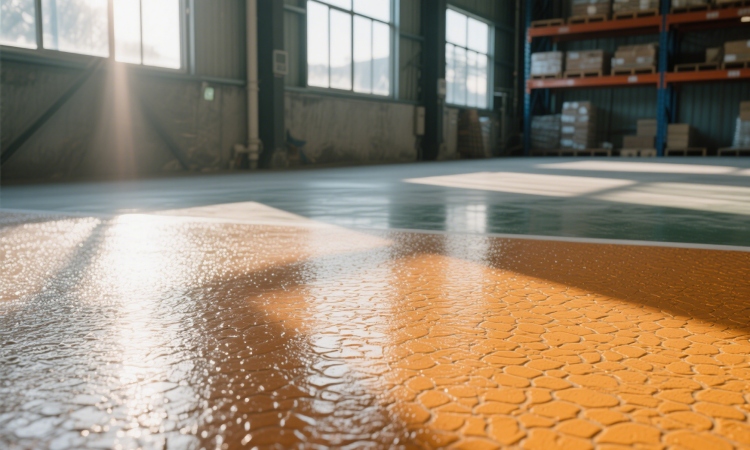At a time when the electronic information industry is booming, water-based epoxy antistatic topcoat has become a key product to solve the problem of static electricity.
Environmental advantages
Green construction: With water as the dispersion medium, there is no organic solvent volatilization during the construction process, and there is no irritating odor, which improves the air quality of closed construction environments such as electronic factories. Construction workers do not need to wear complex protective equipment, which reduces labor intensity and also reduces the cost of enterprises in occupational health protection.
Environmentally friendly: After the product is discarded, it will not cause pollution to soil, water sources, etc., which is in line with the concept of circular economy and sustainable development. In today's frequent replacement of electronic equipment, the use of environmentally friendly antistatic topcoat can help reduce the harm of electronic waste to the environment.
Core functions and performance
High-efficiency antistatic: Through a special formula, a conductive network is constructed on the surface of the coating, which can quickly guide away the generated static electricity. The antistatic principle is to use conductive fillers (such as conductive carbon black, metal powder, etc.) to be evenly dispersed in the coating to form a continuous conductive channel to guide the static electricity to the ground. After professional testing, this topcoat can quickly reduce the static voltage on the surface of an object to between 10 to the 6th power and 10 to the 9th power Ω, meeting the strict requirements of the electronics industry for static protection. In the electronic chip production workshop, tiny static electricity may cause chip damage. The application of water-based epoxy antistatic topcoat has greatly reduced the product defect rate and ensured production efficiency.
Comprehensive physical properties: In addition to antistatic, it also has good wear resistance, hardness and corrosion resistance. In the data center, the heat generated by the operation of a large number of servers and the daily maintenance of equipment require the floor coating to have wear resistance and scratch resistance. This topcoat can meet this demand; in the electronic component storage warehouse, it may be exposed to some chemical cleaners. Its corrosion resistance can ensure that the coating is not corroded and maintains stable antistatic performance. At the same time, the coating has strong adhesion, is firmly bonded to substrates such as concrete and metal, and is not easy to fall off after long-term use.
Construction process and key points
Base surface treatment: Strictly treat the construction base surface to ensure that it is flat, dry and clean. The concrete base surface needs to be polished and dusted to remove the surface slurry and loose particles; the metal base surface needs to be rusted and degreased. For example, in the construction of the floor of a new electronic factory, after the concrete base surface is polished, the dust needs to be thoroughly cleaned with a vacuum cleaner to ensure a good combination of the coating and the base surface.
Paint mixing: The paint should be mixed accurately according to the proportion, especially the amount of conductive material added must be accurate. During the mixing process, it is necessary to fully stir to make the conductive filler evenly dispersed, otherwise it will affect the antistatic performance of the coating. It is generally recommended to use mechanical stirring for no less than 10 minutes, and let it stand for 10-15 minutes after mixing to eliminate bubbles generated during the mixing process.
Construction and testing: Use roller coating or spraying to control the coating thickness to be uniform. The general topcoat thickness is 0.3-0.5mm. After the construction is completed, it is necessary to wait for the coating to be completely cured (usually 3-7 days, the specific time is affected by environmental factors), and then use professional antistatic testing equipment to test the surface resistance, volume resistance and other parameters of the coating to ensure that the antistatic performance meets the standard requirements. If the test does not meet the standards, the reasons must be analyzed and remedial measures must be taken in a timely manner.

